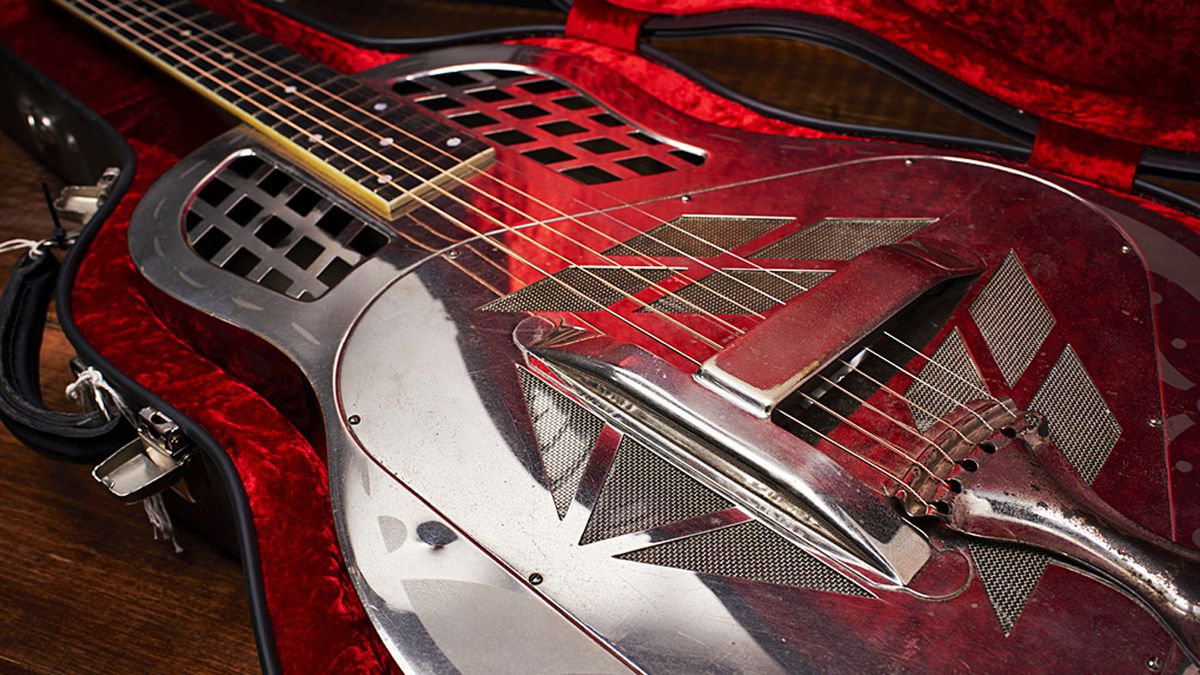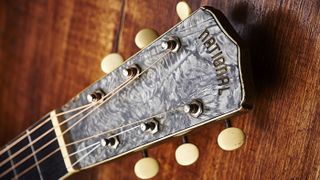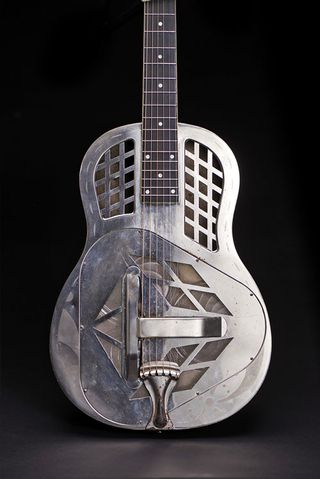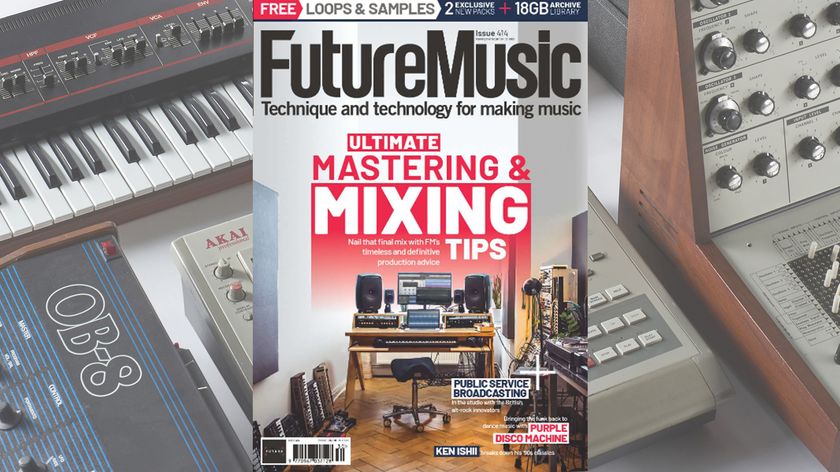Under the microscope: 1937 National ‘Exploding Palm Tree’ Resonator
Shining like a National guitar

What was born out of a simple need for more volume has evolved into a highly collectable - and beautiful - piece of guitar history.
Back in the 1920s, Hawaiian music was rapidly gaining popularity in the mainstream of America, and following a request for more guitar volume from vaudeville star George Beauchamp, John Dopyera, founder of National, responded in 1927 with the Resonator - a radical design that took inspiration from amplifying horns as seen on 78rpm record players of the time.

The decoration on this 1937 National round-neck, brass, tri-cone Resonator makes it an ultra-rare example and a collector’s dream
Paul Tucker of Vintage ‘n’ Rare Guitars in Bath explains: “It was really just a practical means to gain more volume. You can roughly break the categories of National Resonators down into being tri-cones or single-cones; square or round neck; wood, German silver or brass; and then the level of embellishment. There’s something about the sound - they’ve got a certain warmth and definition to them and they don’t sound shrill or spiky. They’re nicely balanced.”
The decoration on this 1937 National round-neck, brass, tri-cone Resonator makes it an ultra-rare example and a collector’s dream. It is, in fact, a noncatalogue model that doesn’t show up officially in any of the company’s literature whatsoever, meaning that it has no official model name! As a result it has subsequently become known among enthusiasts as the ‘Exploding Palm Tree’ due to its unique Hawaiian-influenced design. Of the six of these guitars that have surfaced so far (pictured is one of only two round-necks), it is believed that they were all made in 1937.

Adding to the slightly mythological status of these guitars is a National promotional photograph that appeared in the 1960s showing Delta blues legend Bukka White playing an Exploding Palm Tree Resonator. This may have been purely a case of artistic license, however, and we can only speculate as to whether or not Mr White happened to own and play this particular guitar, as he’s much more strongly associated with playing National Duolians or Style 0 singlecone Resonators.
Pre-war National Resonators, particularly round-neck models, are considered to be of great value, the last of which are reported by the Dopyeras to have been made in 1939, although they appear in National catalogues up until a few years later.
“It’s like a Holy Grail guitar for National collectors,” says Paul, “and there are very few others that command the same prices. It’s very, very rare and doesn’t appear in any of the National literature. It’s right at the end of National - their ‘last hurrah’, in a way!”
Get the MusicRadar Newsletter
Want all the hottest music and gear news, reviews, deals, features and more, direct to your inbox? Sign up here.

Rod Brakes is a music journalist with an expertise in guitars. Having spent many years at the coalface as a guitar dealer and tech, Rod's more recent work as a writer covering artists, industry pros and gear includes contributions for leading publications and websites such as Guitarist, Total Guitar, Guitar World, Guitar Player and MusicRadar in addition to specialist music books, blogs and social media. He is also a lifelong musician.














